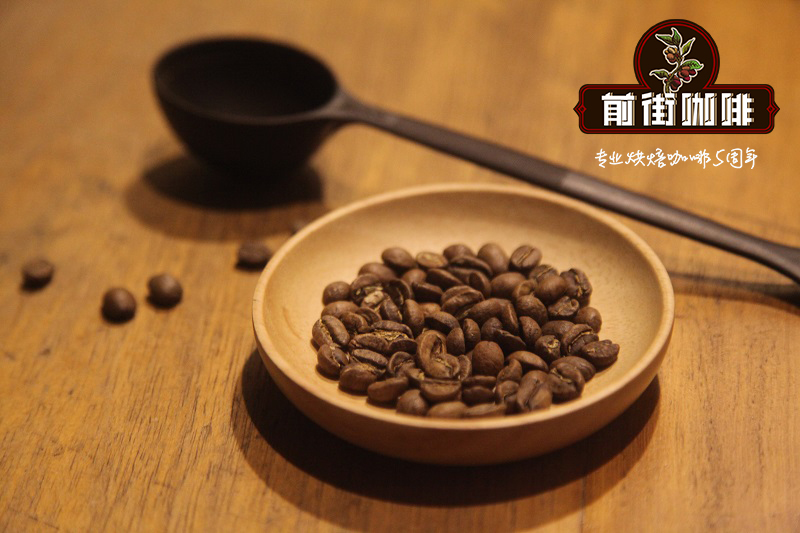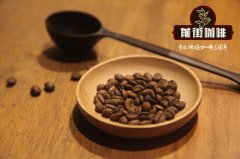Zimbabwe coffee bean variety Zimbabwe coffee bean flavor smooth, refreshing and fruity

Professional coffee knowledge exchange more coffee bean information please follow the coffee workshop (Wechat official account cafe_style)
Front Street-Zimbabwe Coffee introduction
Zimbabwe has been producing high-quality Arabica coffee since more than a century ago. Like Brazil, Kenya, Ethiopia and other big producers, Zimbabwe has produced about 15000 tons of high-quality coffee beans. At the peak of coffee production in Zimbabwe, the coffee industry employed more than 20000 people, contributed more than 2 per cent of GDP and generated more than US $54 million in foreign exchange earnings. But since Mugabe's government introduced land reform, coffee cultivation has been in decline, reaching its lowest point in 2010.
There are only three commercial coffee farms left in Zimbabwe, and 120 farms grew the lucrative crop before the chaotic land reform plan began in 2000.
Coffee cultivation in Zimbabwe is mainly concentrated in the eastern highlands near Mozambique, which are mainly composed of the Chimanimani Mountains and the northward Nyanga Mountains, while the Nyanga Mountains are blocked by the Inyangani Mountains. The main coffee growing area is located near the town of Chipinge at the southern end of the eastern highlands.
Zimbabwe uses water washing method, first soak to remove immature fruits and impurities floating on the water, select beans, and then remove the peel and pulp with a peeler. Then put into the fermentation tank to ferment for 18 hours and 36 hours, make the fermentation bacteria dissolve the pectin on the surface of the coffee cherry, wash it with clean water, dry it for 1-3 weeks, then dry it with a machine, and use a sheller to remove the endocarp, peel, seed shell and silver film.
High-quality Zimbabwean coffee clubs mark "AA" in their bags and some with the words "Code 53" in their bags. In the United States, Zimbabwean coffee is generally circulated under the trademark "Zimbabwe Code 053", with occasional trademarks such as "Zimbabwe Chipinga", "Zimbabwe Rhodesia" and "Zimbabwe La Ruz".
The variety grown in Zimbabwe is Katim, which was developed in 1959 when the Portuguese crossed Brazil's Kaddura with Timo to produce Katim / Katimo with strong disease resistance.
Zimbabwean coffee is the same as high-quality Kenyan AA coffee in every way, with a smooth and refreshing taste with rich fruit aromas.
Flavor: full-bodied, smooth and fruity
In short: Qianjie is a coffee research hall, happy to share the knowledge about coffee with you, we share unreservedly just to make more friends fall in love with coffee, and there will be three low-discount coffee activities every month. The reason is that Qianjie wants to make more friends drink the best coffee at the lowest price, which has been Qianjie's tenet for 6 years!
END
Important Notice :
前街咖啡 FrontStreet Coffee has moved to new addredd:
FrontStreet Coffee Address: 315,Donghua East Road,GuangZhou
Tel:020 38364473
- Prev

Characteristics of Brazilian Hilado Coffee Brazilian Yellow bourbon Coffee is the first choice for nut control.
Professional coffee knowledge exchange more coffee bean information please follow the coffee workshop (Wechat official account cafe_style) front street-Brazil Hilado Veloso Manor Yellow bourbon introduced in Brazil, among the many varieties of coffee, yellow bourbon is one of the most outstanding varieties, the general bourbon will change from green to yellow to red, but the appearance of yellow bourbon will only stay in yellow, growing in a high environment
- Next

Mexican coffee bean brand Mexican chiapas coffee mild and delicate taste and special aroma
Professional coffee knowledge exchange more coffee bean information please follow the coffee workshop (Wechat official account cafe_style) Front Street-Mexican Coffee introduction West Brother's best coffee comes from the southeastern state of Chiapas. The state, which is adjacent to Guatemala and has a good geographical environment and climate, is known as the perennial rainforest and has an amazingly rich biosphere. Beauty in forest areas
Related
- Beginners will see the "Coffee pull flower" guide!
- What is the difference between ice blog purified milk and ordinary milk coffee?
- Why is the Philippines the largest producer of crops in Liberia?
- For coffee extraction, should the fine powder be retained?
- How does extracted espresso fill pressed powder? How much strength does it take to press the powder?
- How to make jasmine cold extract coffee? Is the jasmine + latte good?
- Will this little toy really make the coffee taste better? How does Lily Drip affect coffee extraction?
- Will the action of slapping the filter cup also affect coffee extraction?
- What's the difference between powder-to-water ratio and powder-to-liquid ratio?
- What is the Ethiopian local species? What does it have to do with Heirloom native species?

